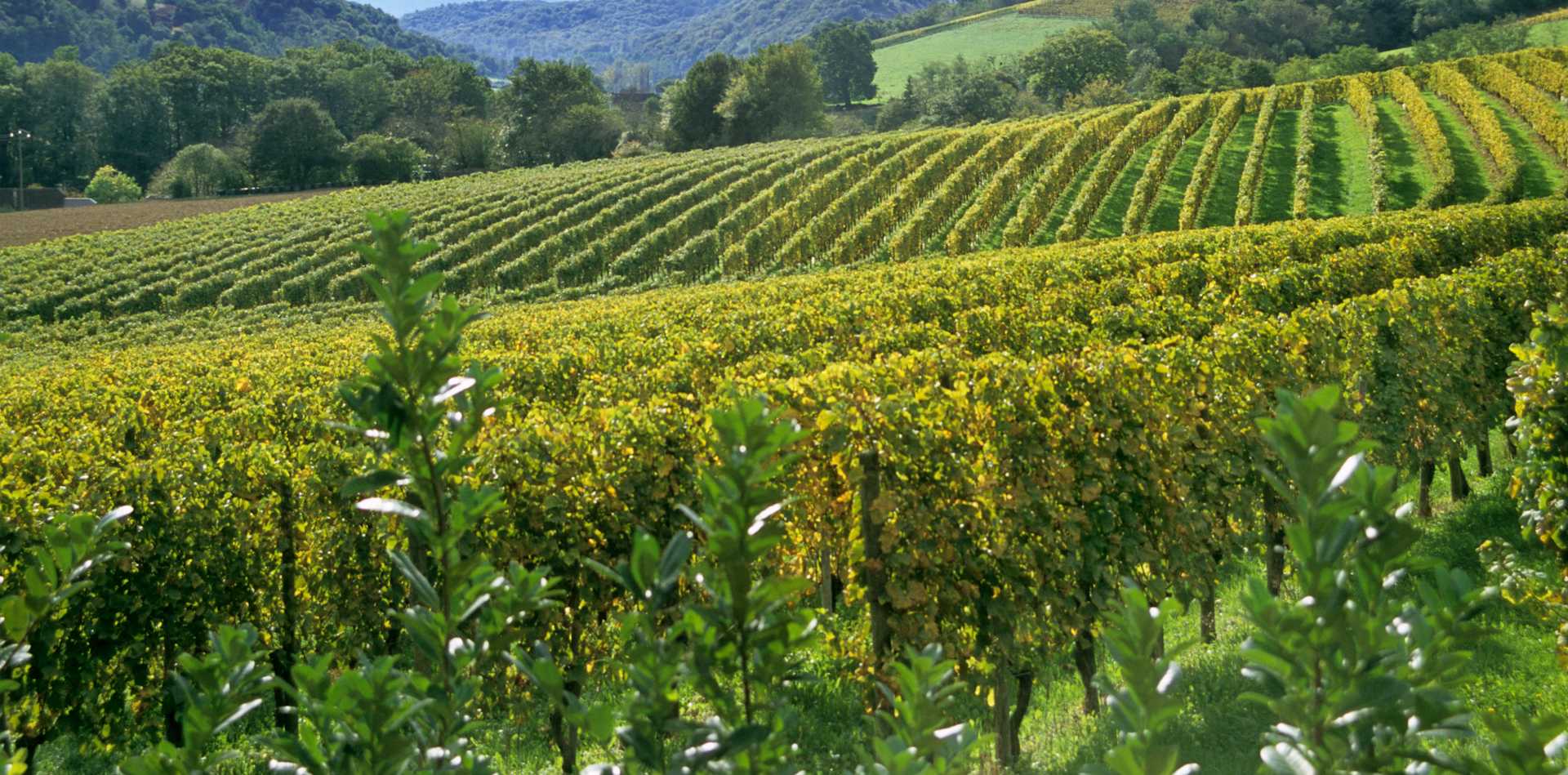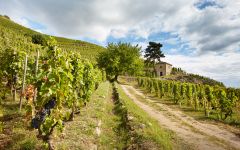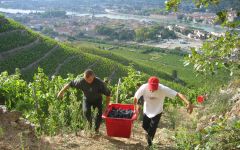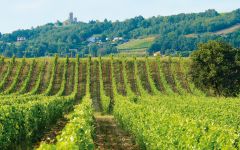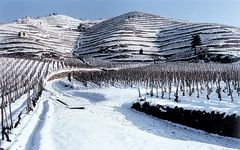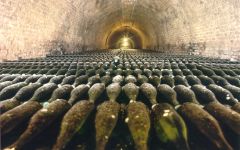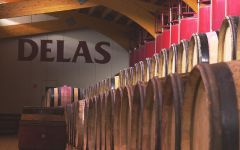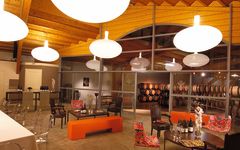Delas Chateauneuf-du-Pape Haute Pierre 2007
-
Robert
Parker -
Wine
Spectator
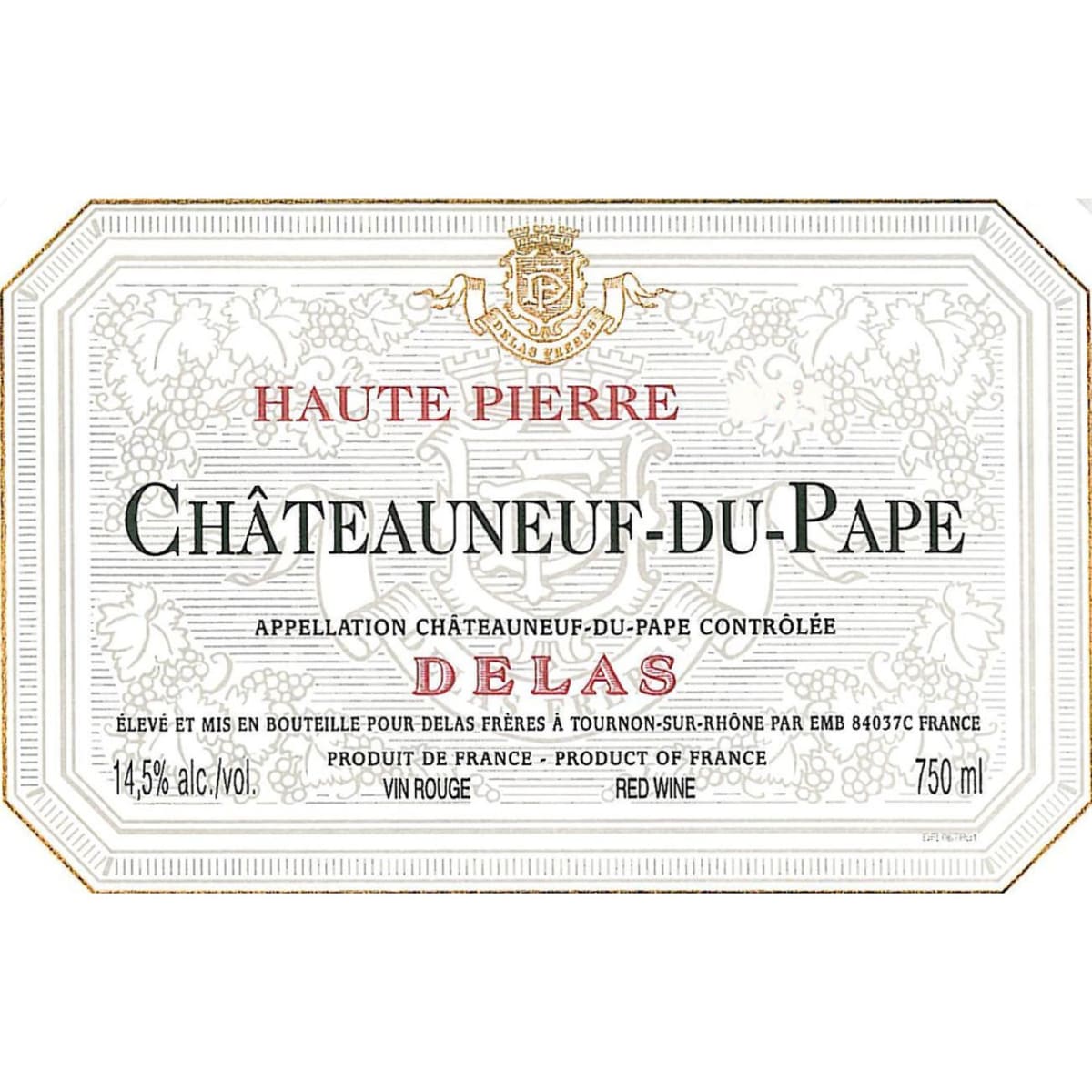

Product Details
Your Rating
Somm Note
Winemaker Notes
Deep garnet red in color. The nose of the ‘Haut Pierre' has strong spicy aromas that reveal a rich, powerful body that is delicate, yet has a tightly-knit tanninc framework. On the palate, the wine is rich and onctuous, revealing intense licorice-like flavors. Can easily be kept 10 years or more. Ideal with the traditional French and "Provencale" type stews and meat.
Professional Ratings
-
Robert Parker's Wine Advocate
The 2007 Chateauneuf du Pape is a blend of 70% Grenache and 30% Syrah. It reveals a deep ruby/purple color in addition to a gorgeous nose of black fruits, spring flowers, licorice, incense, lavender, and grilled Provencal herbs. Dense, full-bodied, flamboyant, and chewy, with that terrific freshness and purity that characterize this great vintage in the south, it should drink well for 12-15+ years.
92-94 -
Wine Spectator
Very friendly fig, boysenberry and blackberry fruit is woven with violet, anise and fruitcake notes that extend through the long, well-rounded finish. Drink now through 2019.
Other Vintages
2020-
James
Suckling
-
Wine
Spectator -
Robert
Parker
-
Wine
Spectator -
Robert
Parker -
James
Suckling -
Jeb
Dunnuck
-
Wine
Spectator -
Robert
Parker
-
Wine
Spectator -
Jeb
Dunnuck -
Wine
Enthusiast -
Wine &
Spirits
-
Robert
Parker -
James
Suckling
-
Wine
Spectator -
Robert
Parker
-
Robert
Parker
-
Wine
Spectator
-
Wine
Enthusiast -
Wine &
Spirits
-
Wine
Spectator -
Robert
Parker
-
Robert
Parker
-
Wine &
Spirits -
Wine
Spectator

With bold fruit flavors and accents of sweet spice, Grenache, Syrah and Mourvèdre form the base of the classic Rhône Red Blend, while Carignan, Cinsault and Counoise often come in to play. Though they originated from France’s southern Rhône Valley, with some creative interpretation, Rhône blends have also become popular in other countries. Somm Secret—Putting their own local spin on the Rhône Red Blend, those from Priorat often include Merlot and Cabernet Sauvignon. In California, it is not uncommon to see Petite Sirah make an appearance.

Famous for its full-bodied, seductive and spicy reds with flavor and aroma characteristics reminiscent of black cherry, baked raspberry, garrigue, olive tapenade, lavender and baking spice, Châteauneuf-du-Pape is the leading sub-appellation of the southern Rhône River Valley. Large pebbles resembling river rocks, called "galets" in French, dominate most of the terrain. The stones hold heat and reflect it back up to the low-lying gobelet-trained vines. Though the galets are typical, they are not prominent in every vineyard. Chateau Rayas is the most obvious deviation with very sandy soil.
According to law, eighteen grape varieties are allowed in Châteauneuf-du-Pape and most wines are blends of some mix of these. For reds, Grenache is the star player with Mourvedre and Syrah coming typically second. Others used include Cinsault, Counoise and occasionally Muscardin, Vaccarèse, Picquepoul Noir and Terret Noir.
Only about 6-7% of wine from Châteauneuf-du-Pape is white wine. Blends and single-varietal bottlings are typically based on the soft and floral Grenache Blanc but Clairette, Bourboulenc and Roussanne are grown with some significance.
The wine of Chateauneuf-du-Pape takes its name from the relocation of the papal court to Avignon. The lore says that after moving in 1309, Pope Clément V (after whom Chateau Pape-Clément in Pessac-Léognan is named) ordered that vines were planted. But it was actually his successor, John XXII, who established the vineyards. The name however, Chateauneuf-du-Pape, translated as "the pope's new castle," didn’t really stick until the 19th century.
